This two-story building’s Art Deco-style façade has been a feature of Kingsway since the 1930s. The adjacent plot of uneven land was part of a brickfield. Brick-making in Dovercourt dates from Roman times. During the 19th century, brick- and cement-manufacturing were leading local trades. The nearby mill, owned by John Patrick, one-time Mayor of Harwich, had 12 cement kilns and drying flues, as well as 14 bottle kilns, in 1881.
A plaque documenting the history of The Bottle Kiln.
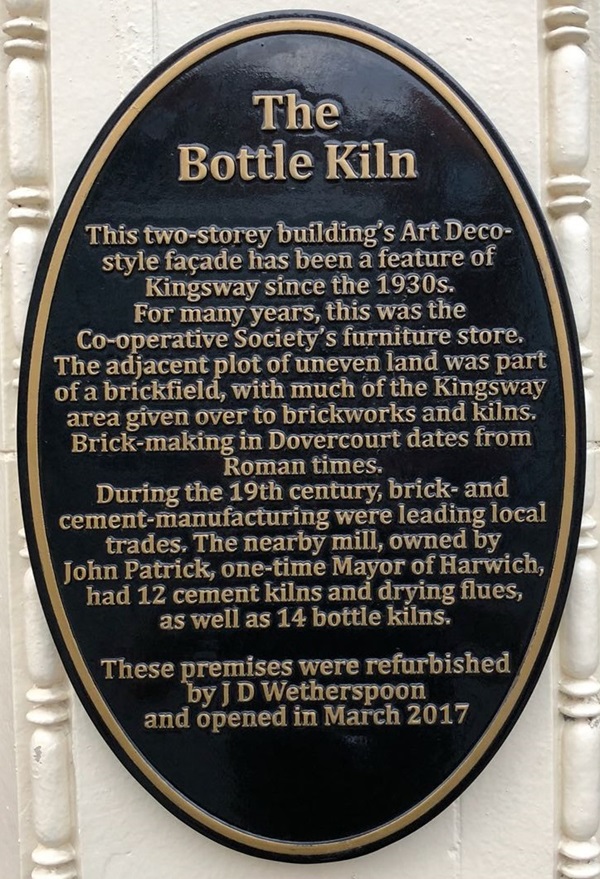
The text reads: This two-storey building’s Art Deco-style façade has been a feature of Kingsway since the 1930s. For many years, this was the Co-operative Society’s furniture store. The adjacent plot of uneven land was part of a brickfield, with much of the Kingsway area given over to brickworks and kilns. Brick-making in Dovercourt dates from Roman times.
During the 19th century, brick-and-cement-manufacturing were leading local trades. The nearby mill, owned by John Patrick, one-time mayor of Harwich, had 12 cement kilns and drying flues, as well as 14 bottle kilns.
These premises were refurbished by J D Wetherspoon and opened in March 2017.
Illustrations and text about a bottle kiln.
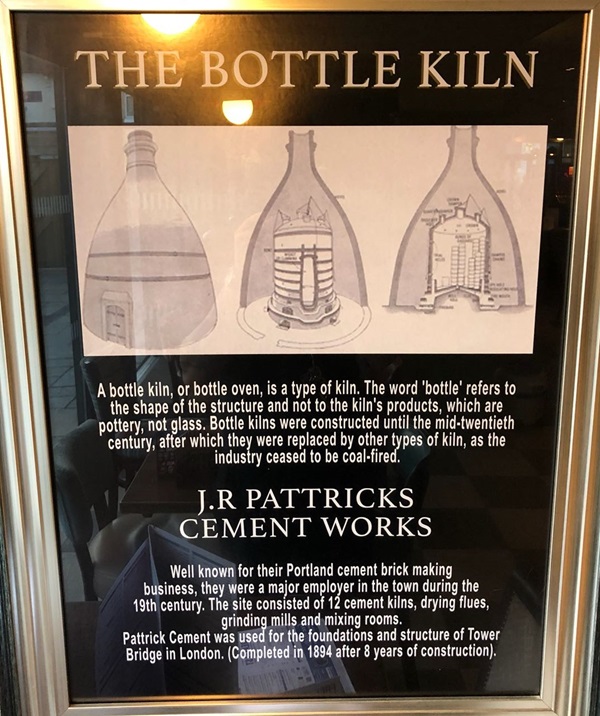
The text reads: A bottle kiln, or bottle oven, is a type of kiln. The word ‘bottle’ refers to the shape of the structure and not to the kiln’s products, which are pottery, not glass. Bottle kilns were constructed until the mid-twentieth century, after which they were replaced by other types of kiln, as the industry ceased to be coal-fired.
JR Pattricks Cement Works - well known for their Portland cement brick making business, they were a major employer in the town during the 19th century. The site consisted of 12 cement kilns, drying flues, grinding mills and mixing rooms.
Pattrick Cement was used for the foundations and structure of Tower Bridge in London. (Completed in 1894 after 8 years of construction).
A photograph and text about William Friese-Greene.
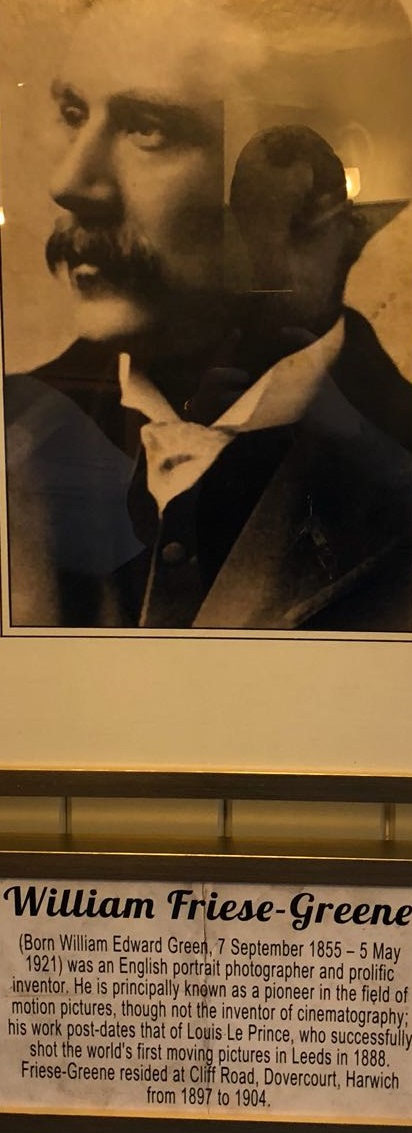
The text reads: (Born William Edward Green, 7 September 1855 – 5 May 1921) was an English portrait photographer and a prolific inventor. He is principally known as a pioneer in the field of motion pictures, though not the inventor of cinematography; his work post-dates that of Louis Le Prince, who successfully shot the world’s first moving pictures in Leeds in 1888. Friese-Greene resided at Cliff Road, Dovercourt, Harwich, from 1897 to 1904.
Photographs and text about Warner Holiday Camp.
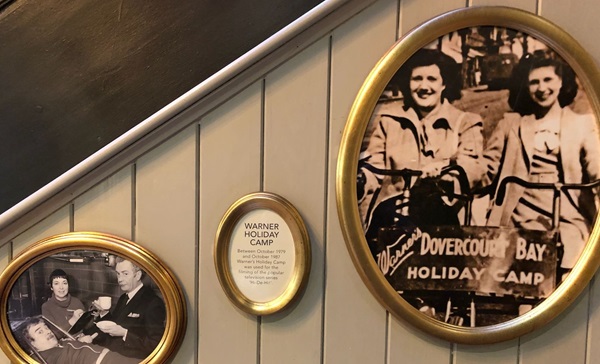
The text reads: Between October 1979 and October 1987 Warner’s Holiday Camp was used for the filming of the popular television series Hi-De-Hi.
A photograph and text about the Co-operative Society.
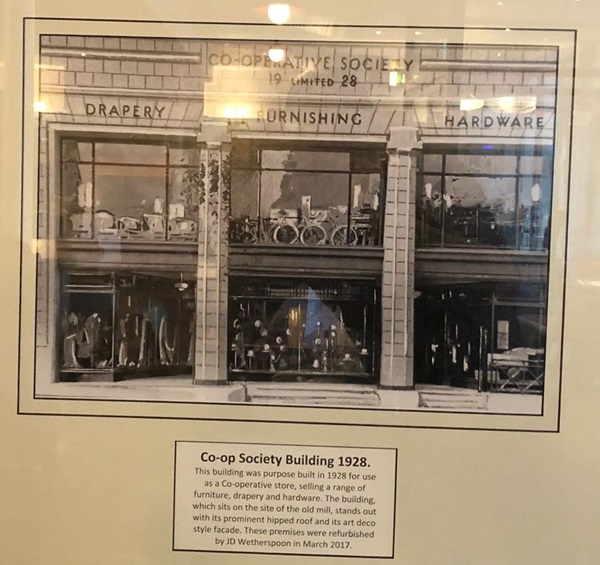
The text reads: This building was purpose built in 1928 for use as a Co-operative store, selling a range of furniture, drapery and hardware. The building, which sits on the site of the old mill, stands out with its prominent hipped roof and its art deco style façade. These premises were refurbished by J D Wetherspoon in March 2017.
Photographs and text about Charles Howarth.
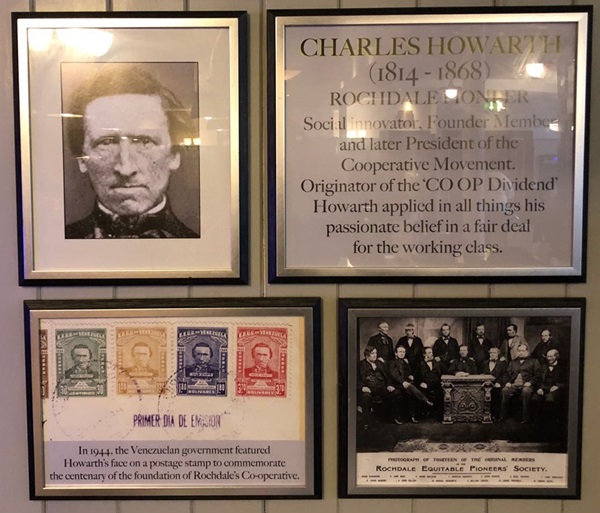
The text reads: Social innovator, founder member and later president of the Cooperative Movement. Originator of the ‘Co-Op Dividend’ Howarth applied in all thins his passionate belief in a fair deal for the working class.
In 1944, the Venezuelan government featured Howarth’s face on a postage stamp to commemorate the centenary of the foundation of Rochdale’s Co-operative.
A photograph of Dovercourt Sands, 1930.
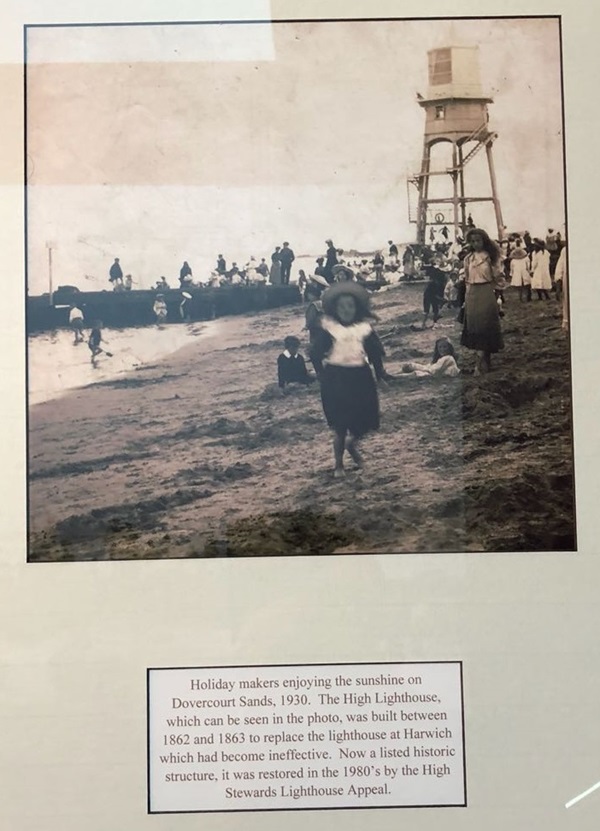
The text reads: Holiday makers enjoying the sunshine on Dovercourt Sands, 1930. The High Lighthouse which can be seen in the photo, was built between 1862 and 1863 to replace the lighthouse at Harwich which had become ineffective. Now a listed historic structure, it was restored in the 1980s by the High Stewards Lighthouse Appeal.
An old football poster from 1953, advertising a Harwich match.
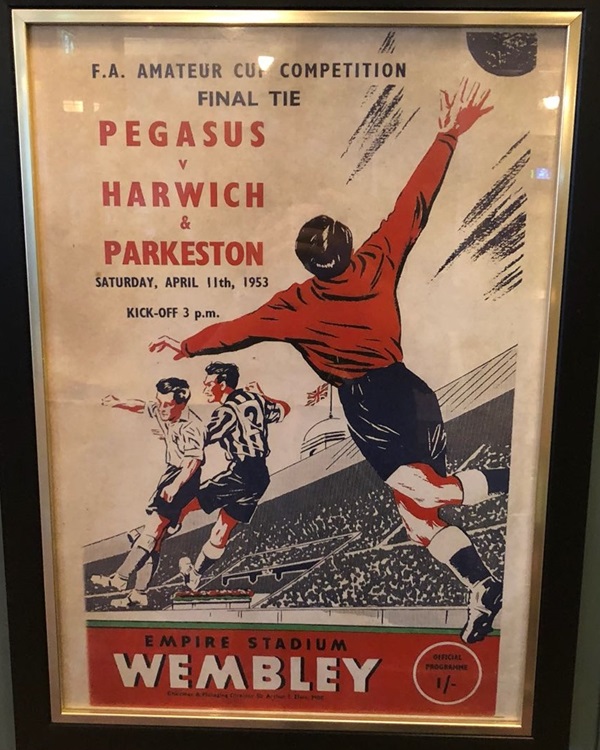
A photograph of High Street, Dovercourt Bay.
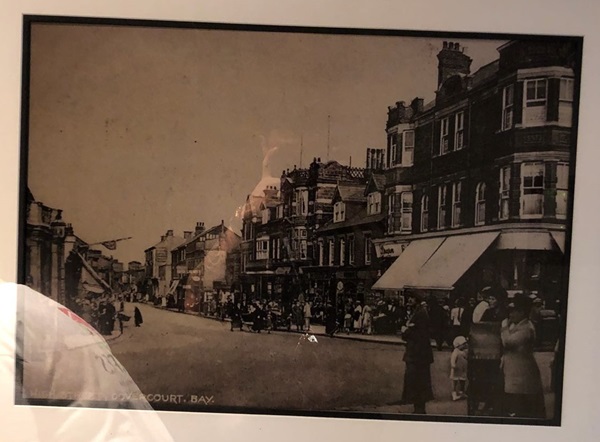
A photograph of retirement celebrations in the Co-op drapery department, c1960.
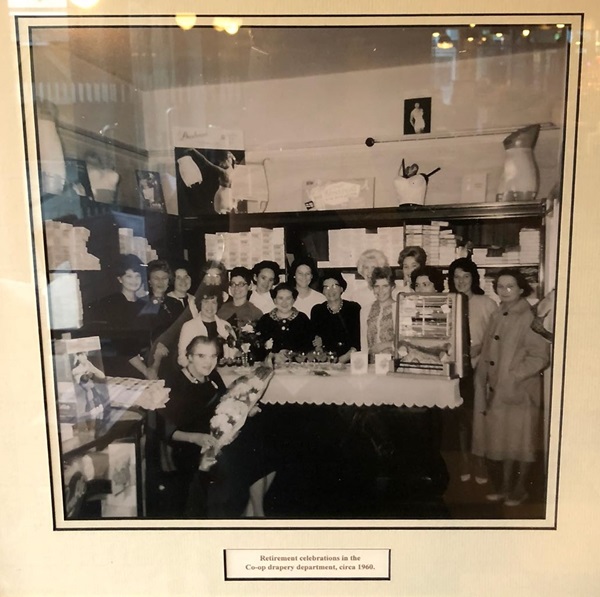
A photograph of the lighthouse and beach, Dovercourt, 1921.
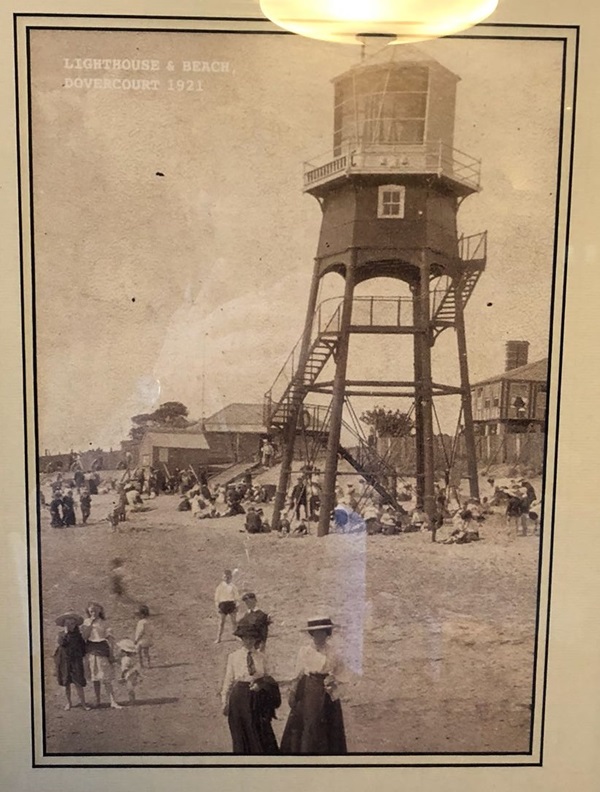
A photograph of retirement celebrations in the Co-op drapery department, c1960.
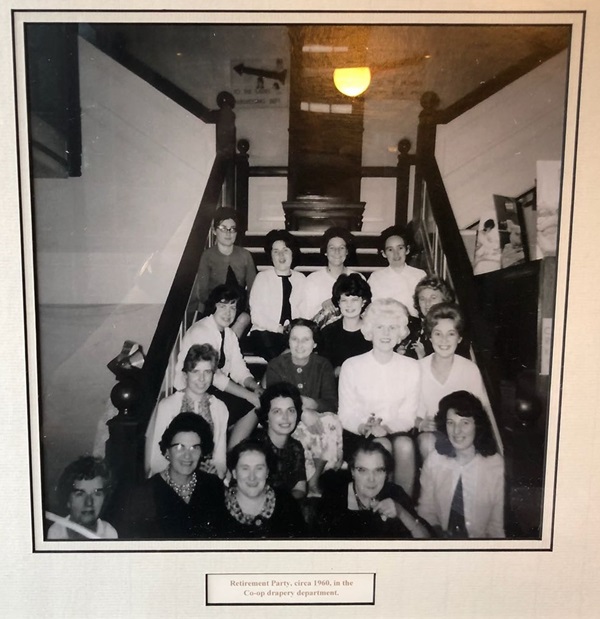
External photograph of the building – main entrance.
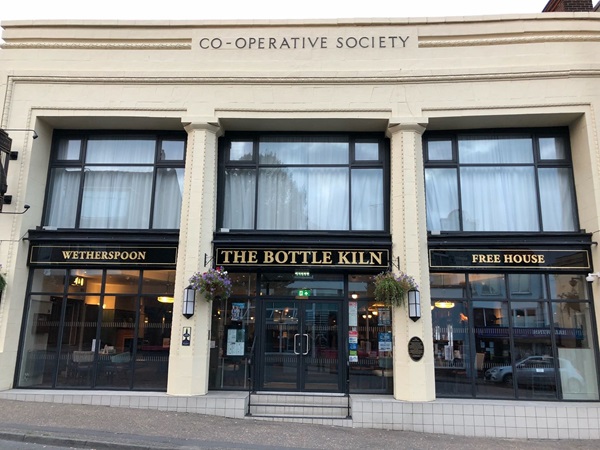
If you have information on the history of this pub, then we’d like you to share it with us. Please e-mail all information to: pubhistories@jdwetherspoon.co.uk